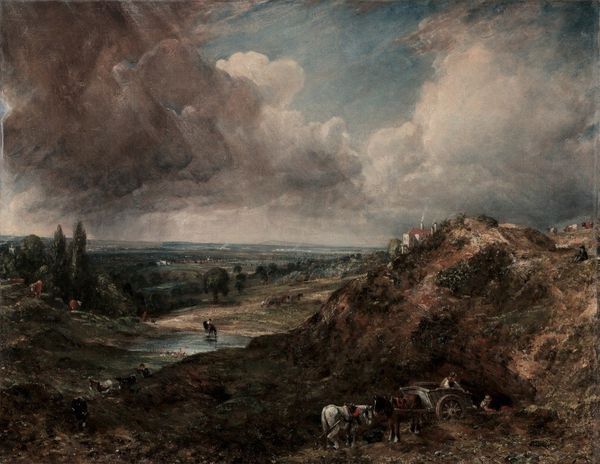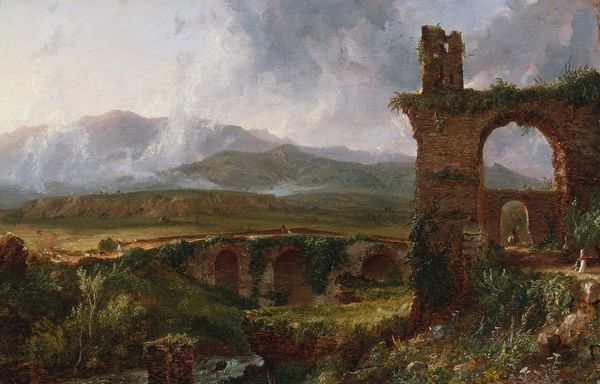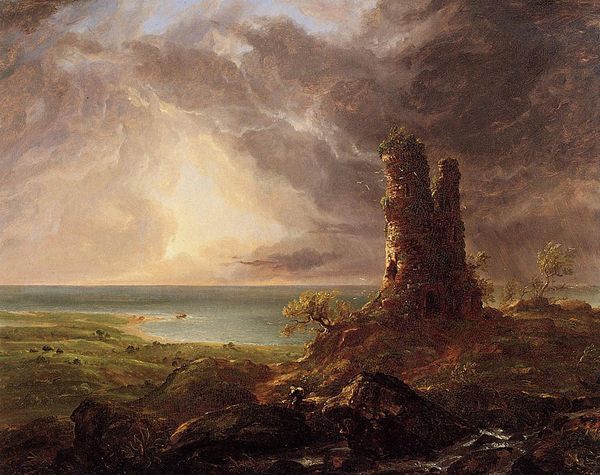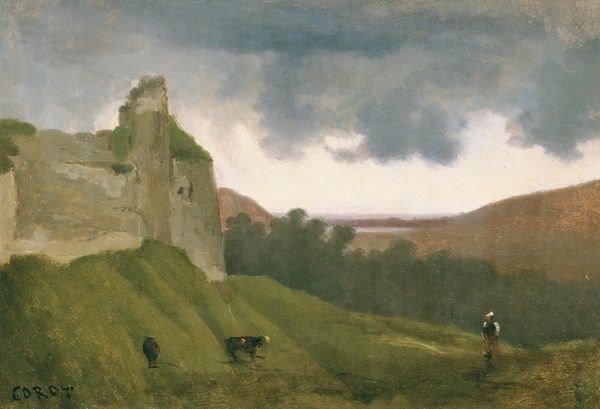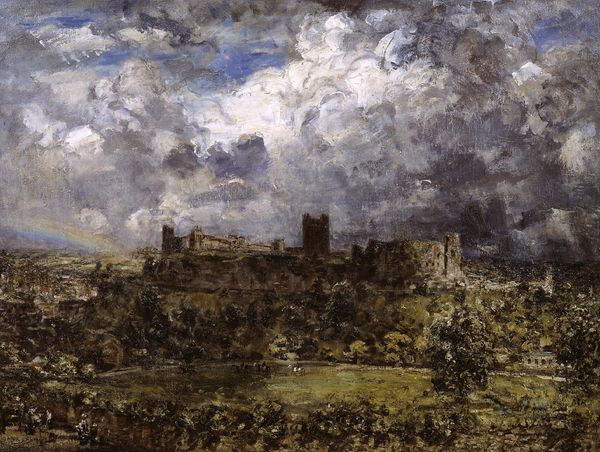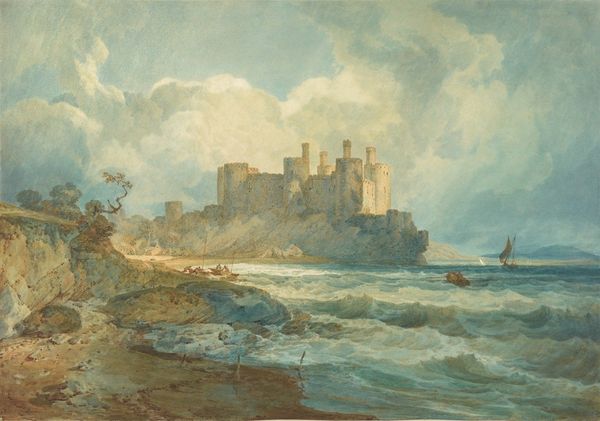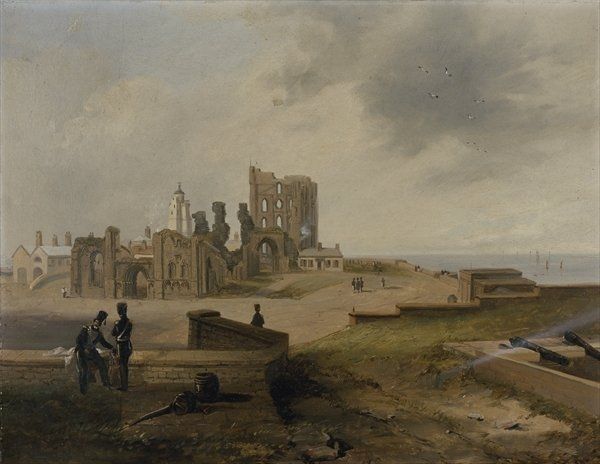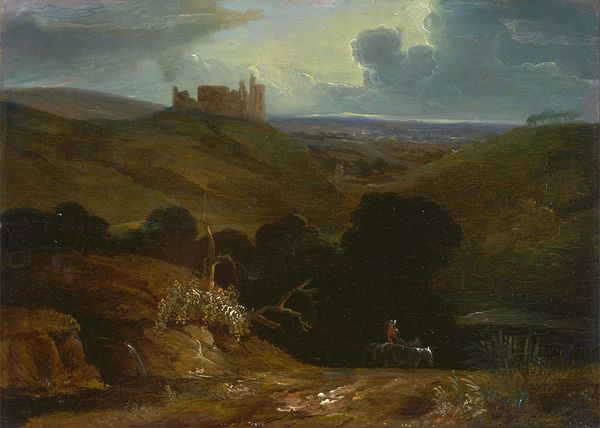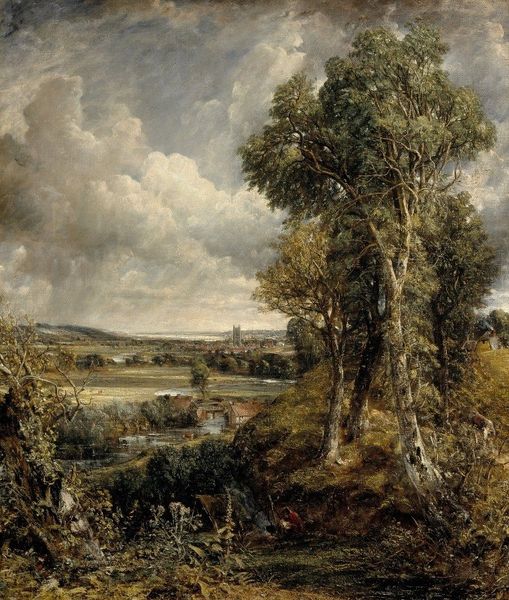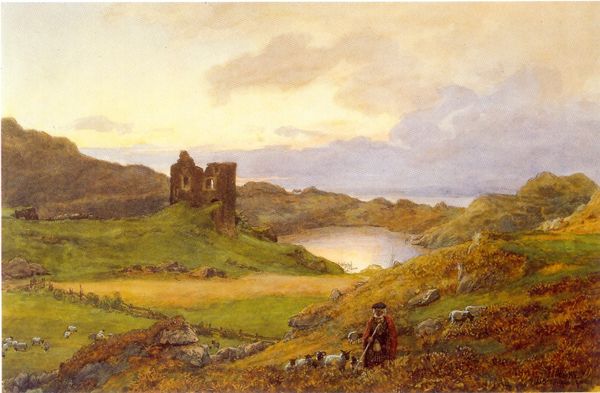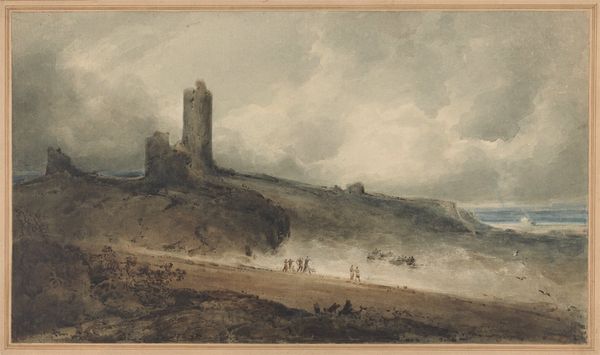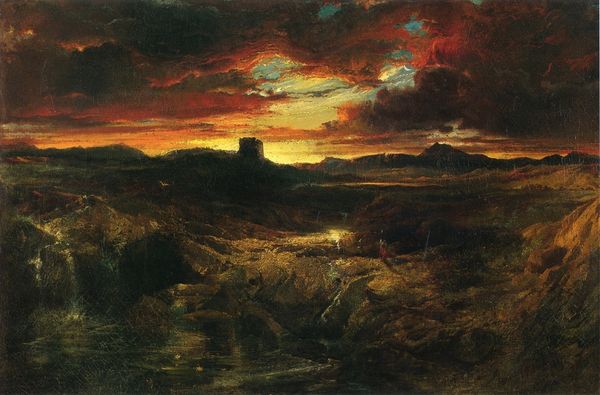
oil-paint
#
oil-paint
#
landscape
#
oil painting
#
romanticism
#
cityscape
#
history-painting
Copyright: Public Domain: Artvee
Editor: Here we have John Constable's "Hadleigh Castle, The Mouth of the Thames—Morning after a Stormy Night," painted in 1829, using oil paint. I'm struck by the sheer dynamism in this landscape – it feels so dramatic, with the ruins framed against that turbulent sky. What do you see in this piece? Curator: Well, first, observe how Constable meticulously structures the composition using contrasting diagonals. The upward thrust of the castle ruins opposes the receding horizontal expanse of the Thames estuary. Notice, also, the sophisticated employment of light and shadow. Do you perceive how Constable renders depth and form through the subtle gradations of tonal values? Editor: I do! The way the light catches the edges of the ruin, it creates a sense of almost tactile reality. It’s beautiful, but I find it very mournful. Curator: Precisely. Now consider how Constable’s brushstrokes contribute to this sense of transience and decay. See how the paint is applied thickly, impasto-like, in some areas, particularly within the architecture itself? This builds the illusion of crumbling texture. The interplay of the impasto of the architecture contrasting with the glazed surfaces elsewhere, what impact does that choice have on you? Editor: I'd say the sharp contrast brings more attention to the ruins of the castle in the foreground, making the backdrop seem far away. I love the clouds. It gives the ruins almost a haunted feel. Curator: Precisely. Do not lose sight of the overarching structure. The strategic positioning of these forms – light and shade, hard and soft brushstrokes – guides the eye and generates a feeling of depth, yet the essence lies in its two-dimensional design. Editor: This piece really highlights the expressive power within form and color itself. The landscape doesn't need to tell a literal story to evoke feeling. Curator: Exactly! Focusing on the intrinsic elements allowed us to peel away extraneous narratives and truly experience the art.
Comments
No comments
Be the first to comment and join the conversation on the ultimate creative platform.
